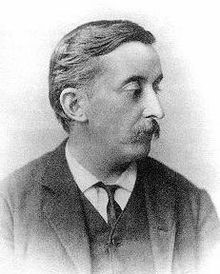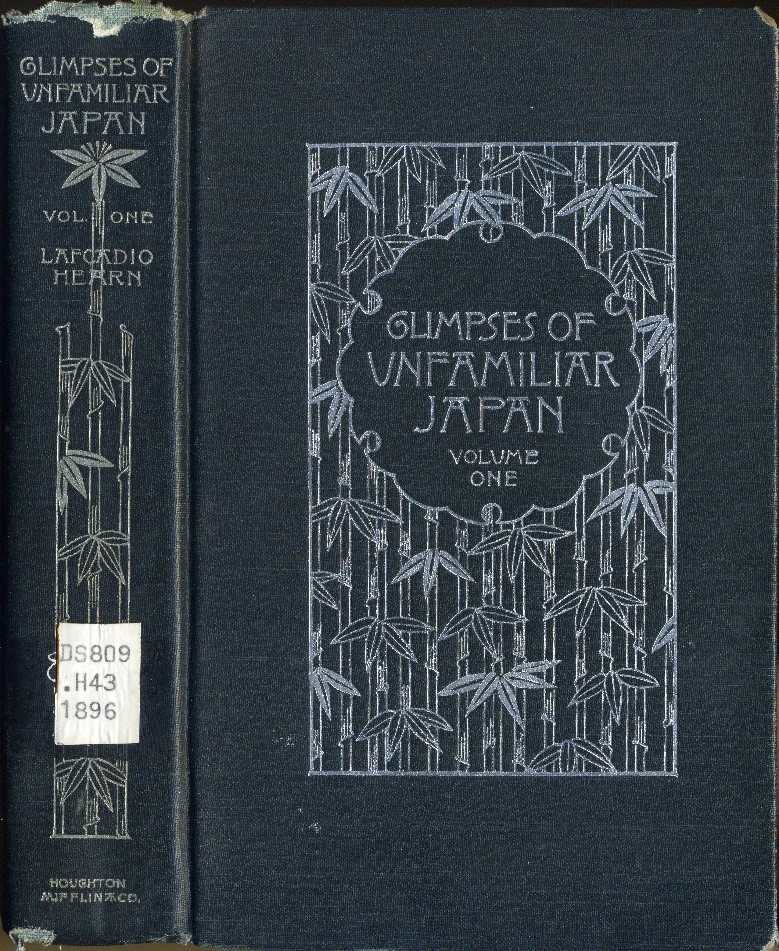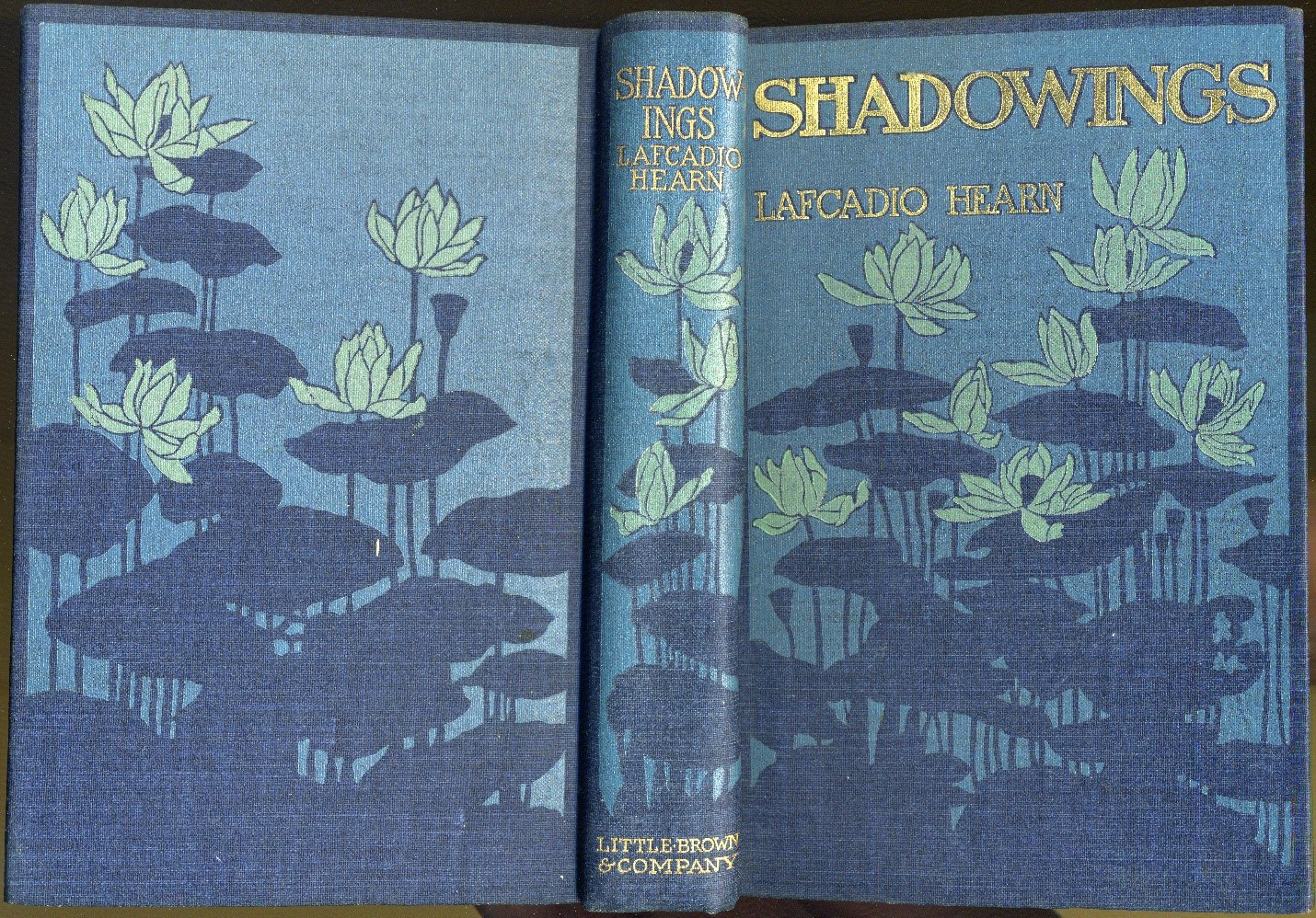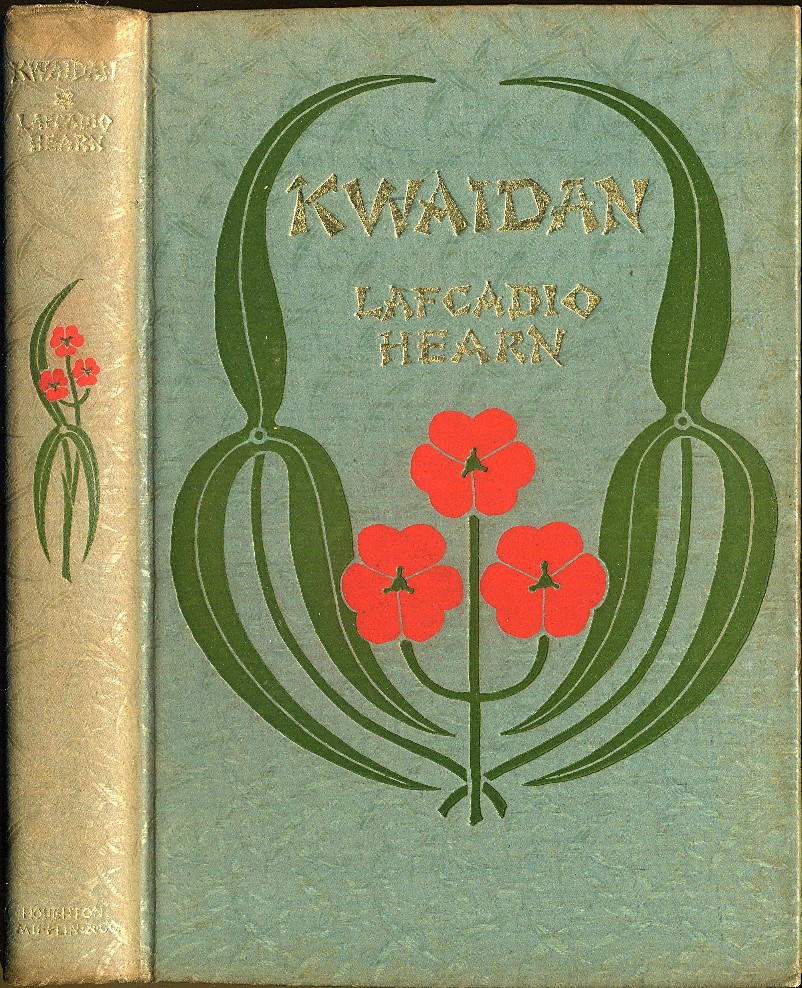Tales from Japan: Lafcadio Hearn and Japanese Folklore
Posted by Jane Metters LaBarbara.September 25th, 2019
Blog post by Stewart Plein, Assistant Curator for WV Books & Printed Resources & Rare Book Librarian
This past weekend I lazily paged through a recent issue of the New Yorker magazine and found a book review for Monique Truong’s The Sweetest Fruits. After reading it, I found that I was already familiar with its subject, the writer Lafcadio Hearn (1840 – 1904), whose books are part of the WVU Library’s rare book collection.
From reading the review I gathered that Truong’s book can be seen as an imagined conversation that relives moments in Hearn’s life, as spoken by the women who were important to him. The promotional description on Amazon’s website describes the book in this way: “The lives of writers can often best be understood through the eyes of those who nurtured them and made their work possible. In The Sweetest Fruits . . . three women tell the story of their time with Lafcadio Hearn, a globetrotting writer best known for his books about Meiji-era Japan.”
Lafcadio Hearn was a newspaper reporter who covered criminal stories, or as we might say today, the “crime beat,” for a New Orleans newspaper. He wrote about the undercurrent of life in New Orleans, covering not only crime but developing an interest in the Creole people, local foods, and voodoo. Later, Hearn was sent to Japan for a story and after his arrival, the commission for the story fell through. Afterwards he was able to obtain a job teaching. He never returned to America. He fell in love with the country and continued to write while he lived in Japan. He eagerly collected stories from their folklore for his books. Later, Hearn became a naturalized Japanese citizen.

Among the many books by Hearn in the rare books collection I found three notable books that Hearn wrote on Japan. The first of these is Glimpses of Unfamiliar Japan. At the time this book was published in 1896, Japan was relatively unknown to the West. Travelogues were popular and Hearn was the first to reveal the Japanese nation and its people to the larger world.
The book’s Japanese style title lettering amid a forest of bamboo in black and silver helps to draws the reader in.

His book, Shadowings, published in 1900, is a collection of strange and weird tales he collected from the Japanese people. The first edition of the book is quite beautiful, attractively wrapped on all sides with a design of lotus flowers blooming above a pool. The lotus blossoms have a ghostly look against the hazy blue cloth. This wraparound design in uncommon in book decoration.

The title of his next book, “Kwaidan,” published in 1904, can be translated as “ghost stories.” This book contains a collection of Japanese supernatural and horror stories. He called the book his “Stories and Studies of Strange Things.” These tales were recounted to him by his Japanese wife, and retold in Hearn’s unique style. Oddly enough, it also contains a study on insects.

If you would like to see these books or any of the books in the Lafcadio Hearn collection, please contact me to make an appointment.
Resources:
- The New Yorker. Books. September 16, 2019 Issue. “Why Lafcadio Hearn’s Ghost Stories Still Haunt Us. The author’s rendering of Japanese folktales made him famous around the globe, but, a century later, Hearn remains the wildest character of all.” By Jonathan Dee. September 9, 2019. https://www.newyorker.com/magazine/2019/09/16/why-lafcadio-hearns-ghost-stories-still-haunt-us
- Amazon. Michelle Truong. The Sweetest Fruits. https://smile.amazon.com/Sweetest-Fruits-Novel-Monique-Truong/dp/0735221014/ref=sr_1_1?crid=22FA2VHV183GY&keywords=the+sweetest+fruits+by+monique+truong&qid=1569270707&sprefix=the+sweetest+fruits%2Caps%2C134&sr=8-1
- Image of Lafcadio Hearn: Wikiquote: https://en.wikiquote.org/wiki/Lafcadio_Hearn
- Lafcadio Hearn: Wikipedia: https://en.wikipedia.org/wiki/Lafcadio_Hearn





